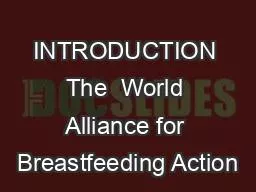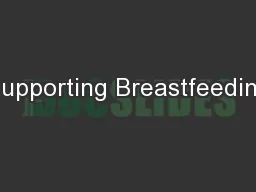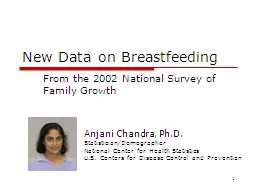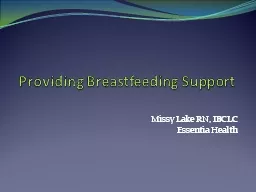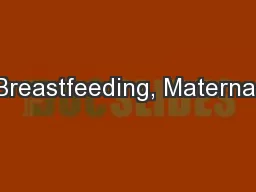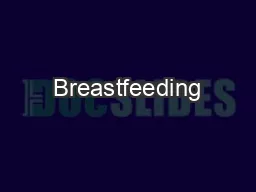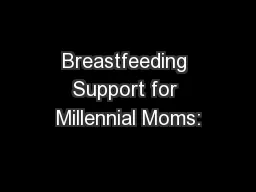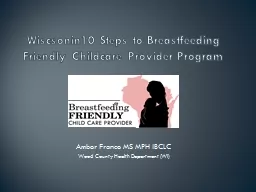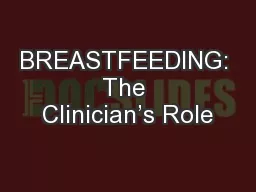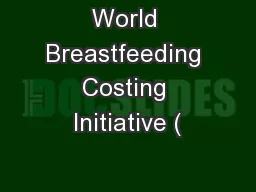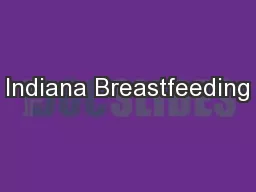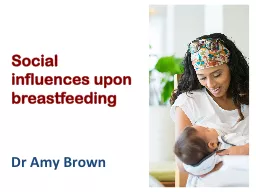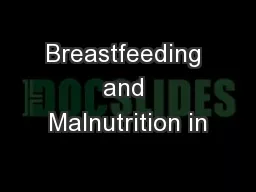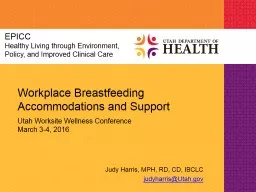PPT-INTRODUCTION The World Alliance for Breastfeeding Action
Author : contessi | Published Date : 2020-10-22
WABA was formed on 14 February 1991 WABA is a global network of individuals and organisations dedicated to the protection promotion and support breastfeeding worldwide
Presentation Embed Code
Download Presentation
Download Presentation The PPT/PDF document "INTRODUCTION The World Alliance for Bre..." is the property of its rightful owner. Permission is granted to download and print the materials on this website for personal, non-commercial use only, and to display it on your personal computer provided you do not modify the materials and that you retain all copyright notices contained in the materials. By downloading content from our website, you accept the terms of this agreement.
INTRODUCTION The World Alliance for Breastfeeding Action: Transcript
WABA was formed on 14 February 1991 WABA is a global network of individuals and organisations dedicated to the protection promotion and support breastfeeding worldwide WABA coordinates the global . Bartick MD MSc Alison M Stuebe MD MSc Eleanor Bimla Schwarz MD MS Christine Luongo MSc Arnold G Reinhold MBA and E Michael Foster PhD OBJECTIVE To estimate the US maternal health burden from current breastfeeding rates both in terms of pre matur in Child Care Settings. Insert Presenter’s Name. Agenda. Introductions. Pre-test . Presentation. Self-assessments. Action Plans. Post-test/Review. Evaluation. Supporting Breastfeeding in Child Care Settings. From the 2002 National Survey of Family Growth. Anjani Chandra, Ph.D.. Statistician/Demographer. National Center for Health Statistics. U.S. Centers for Disease Control and Prevention. 2. Data Source – . Missy Lake RN, IBCLC. Essentia. Health. Benefits of Breastfeeding. FOR MOM. risk of osteoporosis. risk of Type II diabetes. risk of breast cancer. risk of ovarian cancer. FOR BABY. risk of illness. Medications, and Substance Use. New Mexico Breastfeeding Task Force 21. st. Annual Conference: Innovative Approaches to Lactation Management. . March 4-7, 2015. Emilie . Sebesta, MD. Objectives. (1) Understand the basics of drug transfer into human . - Dr Alan Cheng. Australian South Asian Healthcare Association (ASHA). Maternal Health Education Program. Why is Breastfeeding Special?. Contains . antibodies – Protects . baby from . infection.. Less sickness – Diarrhoea . An Evaluation of Mississippi WIC’s Use of Smartphone Technology to Improve Lactation Support. Jameshyia B. Thompson, PhD, RDN, LD, CLC. Deputy Bureau Director. Mississippi WIC Program. Background. Mississippi WIC Program. Amber France MS MPH IBCLC. Wood County Health Department (WI). Development of the 10 Steps Toolkit and Training. 2009 WI Department of Health Services developed 10 Steps Toolkit. 2013 Wood County Health Department developed 10 Steps Training. Dr. Mona . AlSumaie. , . IBCLC. Head of Community Nutrition Supervisory . . . Food . & Nutrition Administration MOH/KUWAIT . about . 800,000 child lives would be saved every year. . WBC. i. ). Breastfeeding has been recognized as the most important intervention for child survival and optimal growth and development. . However, throughout the world, optimal breastfeeding rates are abysmally low, stagnating for over a decade, because of the lack of the enabling environment where women can practice optimal breastfeeding successfully. Coalition (IBC). A Coalition Working to Build Supportive Community Environments . . Tina . Cardarelli . BSEd IBCLC. Director of Breastfeeding Services IPN/IBC . . tcardarelli@indianaperinatal.org . Dr Amy Brown. Overview. How others affect breastfeeding. Grandmothers. Fathers / partners. General public . We are a product of those around us. Attitudes. Knowledge. Persuasion . Criticism . Ability to help . African countries. Cyrina Allen . MPH 583. Fall 2014. Mortality Rate Statistics. Child mortality rates are the highest in Central and West African countries. In Central and West Africa 3 million children under the age of 5 die annually . Utah Worksite Wellness Conference. March 3-4, 2016. Judy Harris, MPH, RD, CD, IBCLC. judyharris@Utah.gov. EPICC. Healthy Living through Environment, Policy, and Improved Clinical Care . Breastfeeding is Well-Being.
Download Document
Here is the link to download the presentation.
"INTRODUCTION The World Alliance for Breastfeeding Action"The content belongs to its owner. You may download and print it for personal use, without modification, and keep all copyright notices. By downloading, you agree to these terms.
Related Documents

